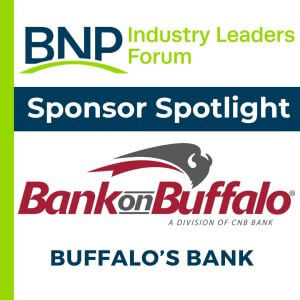The Changing Healthcare Landscape: The BNP Healthcare & Human Services Industry Leaders Forum
Blog Categories
June 11, 2024

The demand for home health and personal care aides is projected to increase by 39% from 2000 to 2030. The existing workforce cannot meet the current demand, there is an overall imbalance in the number of senior citizens and working adults and there are disparities in the level of care that communities receive. The healthcare and human services sectors are at an inflection point, and the decisions made in the next five years will chart the future of patient care.
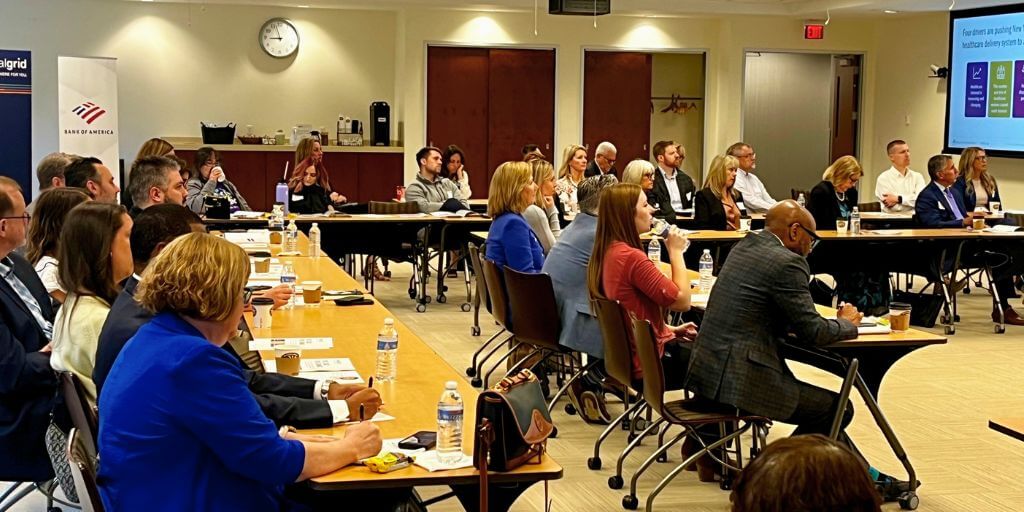
On June 11, the BNP Healthcare & Human Services Industry Leaders Forum convened to discuss regional strategies to address these pressing challenges. The forum emphasized the importance of a future-focused healthcare system and explored how to use new technologies for service reliability in changing markets. Key questions during the conversation included:
What system changes are needed to sustain responsible healthcare services in our community, state and nation?
How can the application of new technologies drive efficient services for our patients and clients?
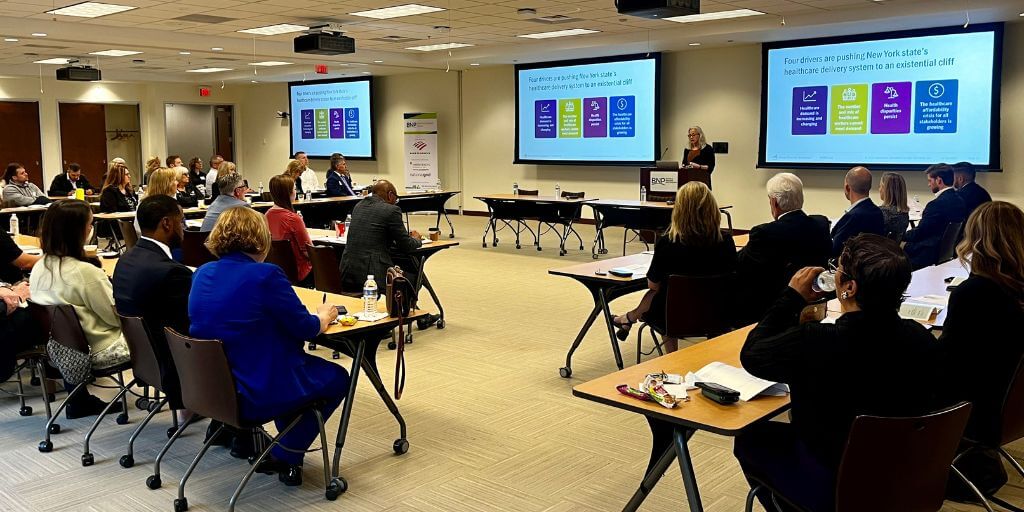
The ILF was fortunate to be joined by Bea Grause, President of the Healthcare Association of New York State (HANYS), for a presentation on the changing healthcare landscape and a data-driven market assessment on New York State’s healthcare infrastructure. HANYS works to ensure every New Yorker has access to affordable, high-quality care. It advances the health of individuals and communities by providing leadership, representation and service to not-for-profit and public hospitals, health systems, nursing homes and other healthcare organizations throughout New York state.
As president of the Healthcare Association of New York State, Bea Grause is a passionate advocate for New York’s nonprofit and public hospitals, health systems and post-acute and continuing care providers.
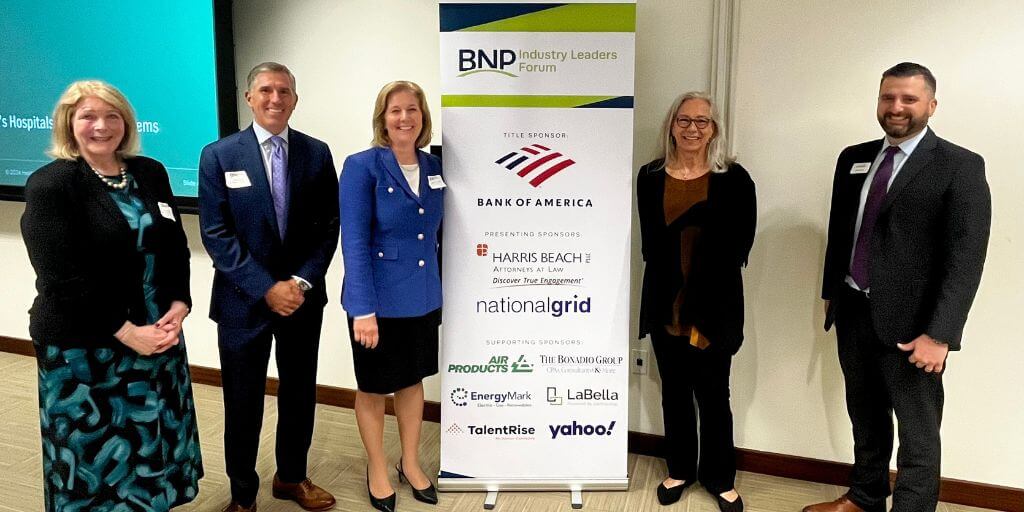
A panel of healthcare experts then led a conversation on how the application of new tech is impacting their businesses and sectors as a whole:
Anne McCaffrey, President & CEO
People Inc.
David Uba, CEO
Excelsior Orthopedics
Cindy Voelker, President & CEO
Spectrum Health and Human Services
Jack O’Donnell, Managing Partner at O’Donnell & Associates, also gave a detailed government affairs update, with a focus on the close of the 2024 New York State Legislative session.
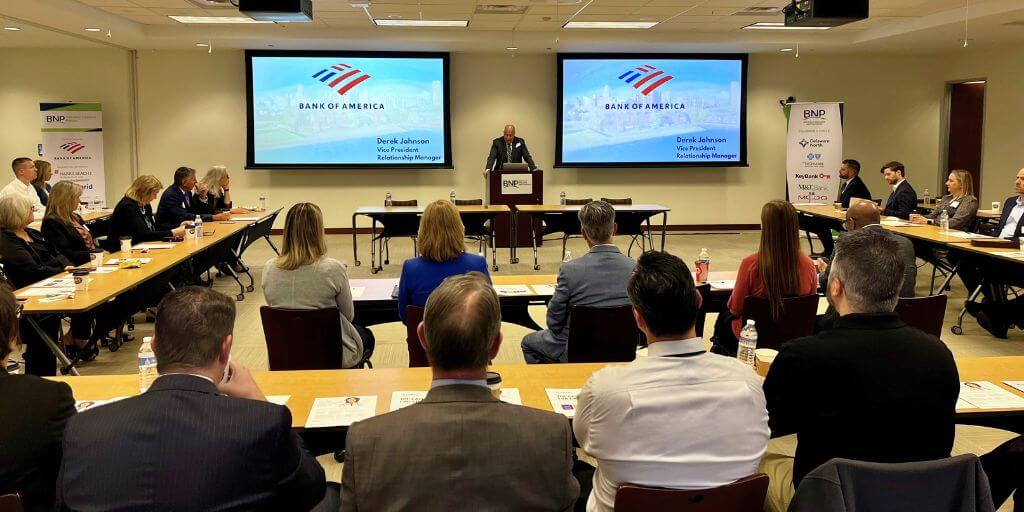
The BNP is proud to welcome in Bank of America as the Title Sponsor for the 2024 ILF. Derek Johnson, Bank of America’s VP of Commercial Banking, kicked off the June ILF with a welcome.
Learn more about the Industry Leaders Forum here.
Title Sponsor

Presenting Sponsors

Supporting Sponsors

Related Posts
Headwinds and Tailwinds: The 2023 BNP Economic Development Summit
The BNP hosted its first Economic Development Summit on December 7 as the culmination of the 2023 Industry Leaders Forum (ILF) schedule. An impressive group of Western New York business leaders came together to discuss the current status of the economy as we collectively strategize for 2024.
ILF Spotlight: BankOnBuffalo Is Buffalo’s Bank
BankOnBuffalo is a presenting sponsor of the BNP Industry Leaders Forum, convening regional business leaders with their peers to strategize for the future success of their industry and the overall economic vitality of the regional economy.
Trends & Regulations: Preparing for a New future for Finance & Insurance Companies
How will government regulations and evolving consumer trends change how Buffalo Niagara companies are financed and insured?
The BNP Finance & Insurance Industry Leaders Forum (ILF) came together on October 5th to discuss this complicated question.
Preparation & Capacity: BNP Energy & Telecommunications Industry Leaders Forum
The BNP Energy & Telecommunications Industry Leaders Forum (ILF) came together on September 14 to discuss the future of the sector in the wake of evolving government regulations and consumer trends


